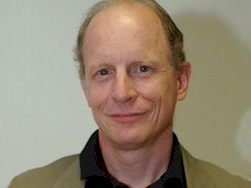Certainly! Some studies, the most common mood state in bipolar disorder is a mixture of hypomanic/manic and depressed symptoms. In fact, the classic picture of bipolar disorder having a course alternating between the poles of high and low moods is an over-simplification. The very name, bi–polar disorder is probably less accurate than the older term, manic-depressive disorder. How can this be?
Although bipolar disorder has been classified as a “mood” disorder, ample research shows that the core symptom of hypomania and mania is not high mood, but rather hyperactivation. The mood, as many people have experienced, can either be elevated or irritable. But what always appears in manic or hypomanic episodes is a sense of being “sped up” physically and/or mentally. Racing thoughts, pressured speech, decreased need for sleep, starting lots of projects, and impulsive decision-making all derive from being overly activated, overly driven. Many times this sense of hyperactivation is pleasant—when one is feeling particularly “on my game” the person is self-confident, more likely to act decisively, and often more likely to take risks. However, sometimes being hyperactivated simply is a sense that one’s “motor cannot be turned off.” This can lead to restless irritability, especially if one is confronted by reality or other individuals that do not match expectations. Thus what is common in mania or hypomania is the sense of hyperactivation, or being driven, but the mood can be variable.
What does the DSM, the official naming system for the American Psychiatric Association, have to say about this? Well, there has been some improvement between DSM-IV and DSM-5. In DSM-IV, mixing of manic and depressive symptoms was barely recognized, appearing only in the very limited category of “mixed manic and depressive episodes.” More recent research guided the writers of DSM-5 to rethink this approach, and they came up with this more reasonable and accurate way of describing mixing of hypomanic/manic and depressive symptoms: Mood state is categorized as primarily hypomanic/manic or depressed, but clinicians can add the “modifier” of having depressive features (for hypomanic or manic episodes) or manic features (for depressive episodes). It is also notable that DSM-5 has taken the same approach to recognizing anxiety features in hypomanic, manic, or depressive episodes.
Overall, then, it is not surprising that mood in hypomania or mania can sometimes be depressed. In fact, it may be most accurate to think of bipolar disorder not as a condition of alternating too-high and too-low moods, but rather as a condition of recurring depressive periods punctuated by periods of hyperactivation—and sometimes these periods of hyperactivation alternate with slowed down, depressed periods, but at other times they overlap.
Because many people think that bipolar disorder can only be “bi-polar”, they may not talk to mental health providers about feeling both depressed and sped up. Assumptions or labels can sometimes get in the way of understanding.



